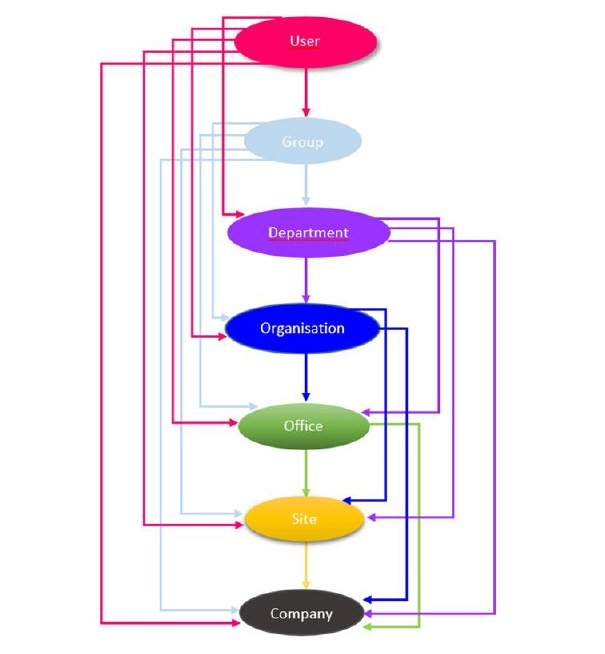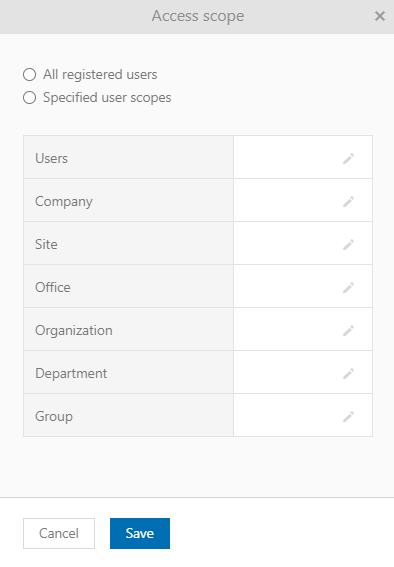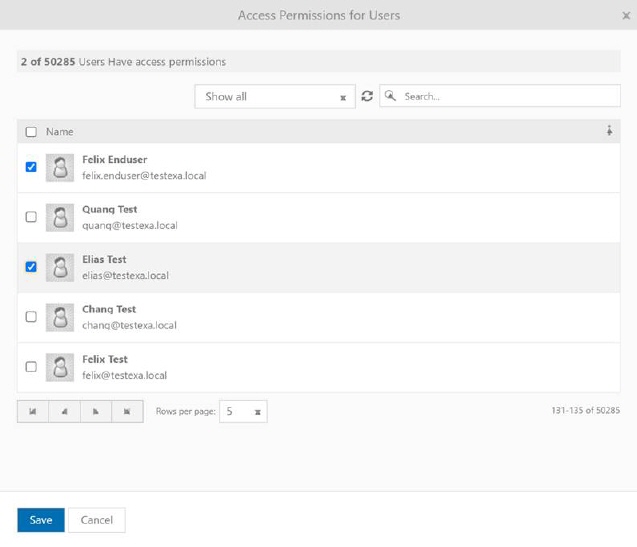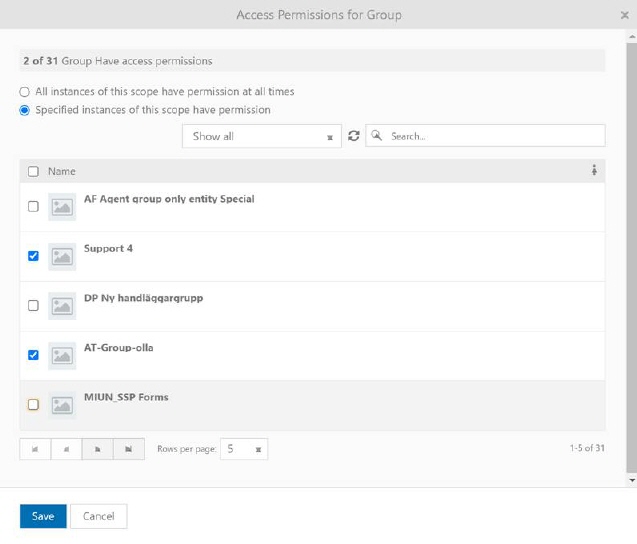
Access Scope can have other scope as member if it is a type of lower level. Access Scope can be member of other scope of higher level:
Membership levels of Scope Types are:
1. User
2. Group
3. Department
4. Organization
5. Office
6. Site
7. Company

Scope hierarchical view
Example:
Group members can be only Users,
Department members can be Users or Groups,
Organization members can be Users, Groups or Departments.
Office members can be Users, Groups, Departments or Organizations.
Site members can be Users, Groups, Departments, Organizations or Offices.
Company members can be Users, Groups, Departments, Organizations, Offices and Sites.

Access scope popup
If you want to grant access rights to all users in the system, select the All registered users option. In case you want to allow access only to certain users, select the option Specified user scopes and then specify in the list below which objects have the right of access.
Giving access rights to a user is done as in the picture below:

Access Permissions for Users
Accessing permission for other scope types (company, site, office, organization, department and group) is done according to a similar principle. In the popup — you must select one of the two options offered:

Access Permissions for Group
All instances of this scope have permission at all times – each member of a particular scope type will be given the right of access, including lower belonging scope types. For example, if we set the permission right for an organization, by selecting this option, each organization will get the permission right, including all groups and users who are members of these organizations.
Specified instances of this scope have permission – this option allows us to choose a specific instance within a scope which will get access permission. For example, if we are configuring access permission for organizations, and with this option we select the organization Nilex from the offered list, only that organization will get the right of access, including groups and users who are members of the same.